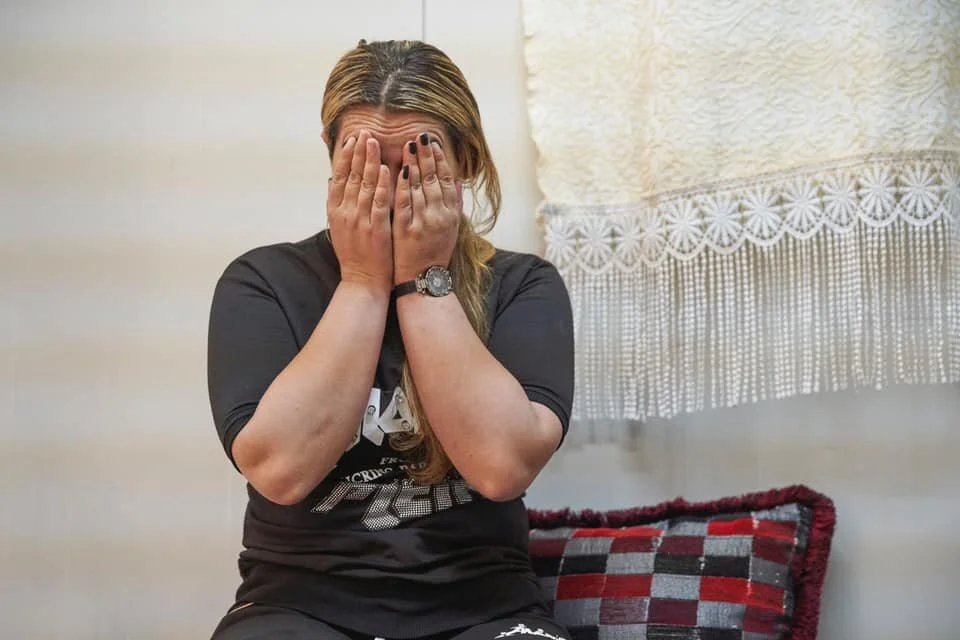The Yazidi Genocide: An Overview
The Yazidi genocide of 2014 is one of the most recent genocides of our time, involving the mass murder, sexual enslavement, and ideological indoctrination of thousands of people. Yet, knowledge of the genocide, as well as public discourse about it, is painfully limited around the world. This article is an introduction to the Yazidi genocide, painting a broad overview of ISIS’ malicious campaign to wipe the Yazidi people, culture, and religion off the face of the earth.
The Yazidi genocide began on August 3, 2014, when ISIS fighters launched a coordinated assault on the predominantly Yazidi region of Sinjar, which is located in northern Iraq. Due to Sinjar’s close proximity to the Syrian border, ISIS forces converged on the region from both Iraq and Syria. They surrounded Yazidi villages, towns, and cities, closed off roads with checkpoints, and sent patrols after fleeing Yazidi families. 40,000 to 50,000 Yazidis managed to escape the terror group’s advance, fleeing to the foothills and peaks of the Sinjar mountains. There, they were besieged by ISIS, and while many managed to escape due to the efforts of Kurdish militias and the US-led coalition, others were killed, captured, or raped by ISIS.
ISIS employed a disturbingly consistent pattern of genocide against the Yazidis who failed to escape their homes, as well as against those who were captured on the slopes of the Sinjar mountains. After surrounding and rounding up Yazidi populations, ISIS fighters would separate young men and male adults from women and young children. The young men and male adults would be escorted to nearby mass graves and shot. However, the mode of mass killing sometimes varied. One testimony of a Yazidi survivor reveals that men would be murdered in front of their families by having their throats slit with knives. Before these executions, militants would frequently order all Yazidis present to convert to Islam in order to save themselves from death. However, testimonies differ regarding how often this rule was upheld: some survivors report that ISIS indeed spared the lives of Yazidi men who converted to Islam, while others assert that men who converted were killed regardless.
While ISIS killed young Yazidi men and male adults en masse, the terror group abducted the remaining Yazidi women and children. They would again be separated based on gender, with Yazidi women and girls being torn away from young Yazidi boys and teenagers between the ages of 8 to 18. Yazidi women and girls would then be sold as sex slaves to ISIS fighters, commanders, and the group’s political leaders. ISIS saw enslaved Yazidi females as “spoils of war,” subjecting them to rape, torture, and other forms of sexual and physical abuse. Yazidi women and girls as young as 9 years old were “inspected” for their beauty at slave markets, sold multiple times, raped multiple times, and tortured multiple times.
The young Yazidi boys and male teenagers who were separated from their families endured a different kind of suffering than the sexual exploitation inflicted on female Yazidis. They were sent to camps throughout Iraq and Syria, forcibly converted to Islam, and trained to become jihadists. They received extensive religious and military training, learning “how to load and unload guns, shoot using live bullets, and launch small and medium-sized rockets.” They were also forced to watch videos of beheadings many times in a row to desensitize them to violence, and they were beaten when they refused. ISIS hoped to transform these young Yazidi boys and teenagers into a new generation of fighters, calling them “the cubs of the caliphate.” An ISIS fighter concisely explained this jihadist training program with the following words: “Children are young; they are like animals. We can change them.”
So far, the details of the Yazidi genocide have been broadly explained. But why did the genocide occur? What drove ISIS to carry out a multifaceted campaign of murder, rape, and indoctrination against the Yazidi people? ISIS’ motivation for committing genocide against the Yazidis was ultimately a religious one. The terror group perceived the Yazidis as kuffar (infidels) due to their supposed “devil worship” of Malak Taus, the Peacock Angel. The Yazidis believe in a monotheistic religion in which God, Xwedê, has three manifestations: the Peacock Angel, Sheikh Adi, and Sultan Ezi. The Peacock Angel is the holiest member of this divine trinity, and he bears some resemblance to the figure of Iblis (Satan) in the Qur’an. Despite the fact that the Peacock Angel is not Satan in the Yazidi religion, this misunderstanding has led Muslim communities, including ISIS, to persecute the Yazidis as “devil worshippers.” ISIS hoped to establish a caliphate in Iraq and Syria that was purified of all nonbelievers, and the Yazidi genocide was an attempt to destroy the Yazidi people, erase the “heresy” of their religion, and usher in a utopian Islamic state.
The cost of ISIS’ genocide was tragic for the Yazidis, resulting in the deaths of at least 3,100 people and the kidnapping of 6,800 people in the Sinjar region alone. Additionally, ISIS’ conquest of the Sinjar region, as well as of nearby cities and areas, led to the displacement of over 1.5 million people. A genocidal program of such magnitude and consequences deserves more attention from the international community and the public at large. Hopefully, by educating readers about the Yazidi genocide, this article will inspire others to continue learning about this topic, keep raising awareness, and take action.
Text & Video by Seth Eislund


